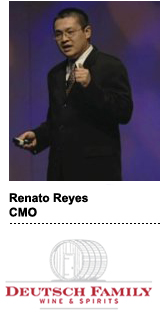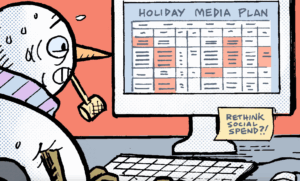Wine brand Josh Cellars doesn’t have a taste for traditional media.
“We made a choice to stay away from broadcast TV and cable, at least for now,” said Renato Reyes, CMO of Josh Cellars’ parent company, Deutsch Family Wine and Spirits, whose portfolio also includes more household names. Deutsch is the US distributor of Yellow Tail.
But while it makes sense for a mainstream advertisers to fall back on mass media – for example, this year Yellow Tail was the first wine brand to air a Super Bowl spot in nearly four decades – Josh Cellars is turning to digital for the targeting it offers.
“Digital lets us reach specific wine consumers, mostly Generation X consuming wine at the $10 to $15 price point – and there aren’t a lot of them,” Reyes said.
In mid-November, Napa Valley-based Josh Cellars poured $10 million into a digital-only campaign centered on a series of videos that tell the brand story in founder Joseph Carr’s own words, a tribute to his blue-collar childhood in upstate New York.
AdExchanger spoke with Reyes about Josh Cellars’ digital embrace, brand safety and why he finds audience-based targeting far superior to contextual.
AdExchanger: How has Josh Cellars’ marketing strategy evolved since it was founded in 2005?
RENATO REYES: The strategy hasn’t actually changed that much. It’s always been to be honest and to bring out the truth of the brand. The wine category is very, very fragmented and there’s a lot of competition in the market. There are more than 7,500 wineries just in the US.
 We think the key behind the Josh Cellars brand is the price impression – that consumers can get a $25 bottle of wine for about $14 – and that’s created in a variety of ways. One is the quality of the wine itself; another is the way it looks, which is premium. When you get to the marketing, it’s about telling the inspiring true life story of the founder.
We think the key behind the Josh Cellars brand is the price impression – that consumers can get a $25 bottle of wine for about $14 – and that’s created in a variety of ways. One is the quality of the wine itself; another is the way it looks, which is premium. When you get to the marketing, it’s about telling the inspiring true life story of the founder.
Why the decision to focus solely on digital for your latest campaign?
We’ve been heavily focused on digital since the beginning, with some print and out-of-home in the mix. But we found that as time progressed, we needed video and sound to effectively tell our story, which is why we migrated away from static media and toward digital and social video.
Where are you reaching your target?
If a media partner allows us to be fully viewable with the sound on, we’re interested. For this campaign, that mainly means YouTube, Hulu, CNN, The New York Times and full-episode players for NBC and CBS. With programmatic, we only serve into an environment if the exchange offers these same criteria.
We look at online and social behavior to signify an interest in wine. Our media agency, Havas, helps us sort that out.
So far, we’ve been particularly pleased with Hulu, because most of our ads are being viewed on big screens through streaming devices like the Fire TV Stick or Roku.
Do you do contextual targeting?
We’re more focused on environments that can deliver our audience based on our targeting criteria rather than the context in which an ad is being served, and we haven’t done much with contextual targeting other than knocking out undesirable shows we don’t want to be on.
But context could play a bigger role in future. We’re having discussions about making a big investment to appear in a marquee show, something that aligns with our brand values, like “This Is Us,” for example, which is about family and growing up in America.
What are your KPIs for the digital video campaign and how are you measuring results?
This is about building awareness, but we’re also interested in how that translates to sales. We’re planning to do tracking studies that tie credit card and purchase information to people who have seen our ads versus people who haven’t. I’m skeptical, but it’s a fascinating idea.
We’re also going to start tracking the sequence in which people see the ads. There are 11 different spots in the campaign and we believe there is an ideal sequence in which to view them.
We’re getting more sophisticated with our measurement, but we’re still in the experimental, learning stage.
What challenges do you face as an alcohol brand running online media?
Online actually makes it easier, because we don’t have to worry about whether we’re taking a risk on the audience composition. For example, we know we’re reaching adults online, but if we do TV or cable, our media agency has to work doubly hard to make sure that every show our ads appear on is LDA [legal drinking age]-compliant based on the wine code. With digital, we can automate that.
What about the flip side? How does Josh Cellars approach its own brand safety?
We always have a thorough brief. We’re a small company, but we make sure to examine at our media plans in great detail, especially since we’re looking for premium buys. We take care to understand how our ads are being served on every platform and keep a close eye on show lists and website lists.
It’s not a perfect science, and over the past few years some ads occasionally have gotten through, mostly on the Yellow Tail side, where we’ve bought most of our media. But, for the most part, we’ve been able to stay targeted and filter out the places and people we don’t want.













